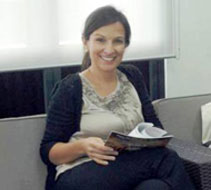
Several factors are inhibiting German firms to invest into the Philippines, according to a source from the Manila-based German-Philippine Chamber of Commerce and Industry (GPCCI).
Based on the data from the industry body, there were 52 German firms in 2009, with only an addition of one company from 2008. German direct investments in the Philippines increased significantly between 2008-2009, going up by EUR28 million to an amount of EUR324 million, while indirect investments decreased by EUR1 million in 2009, compared to the year earlier. By 2010, trade volume between Germany and the Philippines reached EUR3.3 billion, making it Philippines’s top trading partner in Europe. By 2012, Germany remained as the top trading partner of the Philippines, bringing in 32.4% of EU’s US$10.571 billion goods trade with the Philippines (9.3% of the country’s total foreign trade), according to recent figures from the National Statistics Office.
Amidst the modest investments growth, many German companies are still “shy” in investing into the Philippines for varied reasons, amongst which are the fact that there are still a number of these firms who are unaware even of what to expect from the Philippines. The latter refers to its culture and its environment, according to Nadine Fund, General Manager of the German-Philippine Chamber of Commerce and Industry (GPCCI), in an interview with PRA during the association’s media launch on 13 January.
“A number of them have never been to the Philippines. For some, the country is still a white spot on the map. So we introduce the country to them. In a way, we are helping the Department of Tourism by making the Germans aware of why the Philippines is a suitable business destination.” As part of this effort by the GPCCI, which also does business matching for German companies to co-venture with Philippine-based companies, Fund said that she visits Germany three to four times a year to promote the country as a business hub.
The familiarity with Thailand, Indonesia, Singapore and other ASEAN countries also accounts for drawing more interests to invest there than in the Philippines, she observed.
GPCCI has 200 members, including those in the automotive and chemicals sectors, which are amongst the top ten sectors where German firms are actively engaged.
Chemical specialists BASF and Evonik, which established a Philippine sales centre; automotive parts maker ZF Friedrichshafen and electronic giant Bosch as well as automation specialist Festo are amongst the GPCCI members.
Fund mentioned Continental (referring to Continental Temic Electronics, a local unit of conglomerate Continental Corporation) as a model business, since the company has been expanding its sites in the country. “Continental currently has three sites: one in Taguig City (Manila) and two in Laguna,” she said.
Late last year, Continental invested an estimated EUR50 million to install new technologies in the Philippine facilities, according to reports.
However, there is still a lot of spadework to be done in terms of encouraging German investments into the country, Fund said. The country’s infrastructure is a major consideration. “(Firms) used to have to go to the Manila port (the largest shipping gateway in the country) and it’s only in recent months that the Batangas port has become accessible.”
Early last year, the government, through Asian Terminals Inc (ATI), urged firms and importers, especially based within the CALABARZON (Cavite, Laguna, Batangas, Rizal, and Quezon cluster of provinces) to use the Batangas port to cut down delivery, shipment and storage costs.
Fund said that the country’s main advantages are the ability in speaking the English language, as well as the young workforce. “There is no skills gap,” she said. To help upgrade skills of the workforce engaged in various manufacturing segments, GPCCI has teamed up with the Philippine government and other institutions in crafting training programmes under the TVET (Technical Vocational Education and Training) system, wherein trainings will mostly be hands-on and held on-site.
With the forthcoming implementation of the ASEAN Economic Council (AEC) in 2015, Fund said that the region’s synergistic advantages, ie. location, infrastructure, skills and materials source-strategic, will significantly benefit investors.
“The Philippines is ready for the AEC.” Fund assessed when asked how the country will fare amongst its neighbours when the regional integration takes effect. “It is just a matter of optimism and confidence projection for the country. This is because the Philippines, far from being ‘just a small island’, has got what it takes to be globally competitive,” she added.
(PRA)















